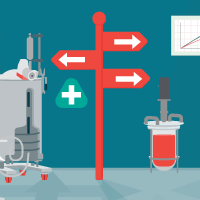Decentralized patient access: how do we get there?
Cell & Gene Therapy Insights 2025; 11(6), 763–774
DOI: 10.18609/cgti.2025.085
Medicine today has moved from harnessing the power of nature around us to unlocking the strength of cells within us. With multiple licensed CAR-T and cell therapy products on the market, patients benefit, but, even today, too few and too slowly 8 years after initial approval. Commercial success and ongoing investment in the space for therapies and technologies to support them are critically dependent on increasing the treated patient population. Meanwhile, eligible patients are struggling to get to care. The total treated population is in the tens of thousands of patients, with only 20% of the eligible patients ultimately receiving treatment. In a 2022 abstract published at ASCO, statistics across multiple institutions highlighted a 6-month waiting period and 25% treatment rate for patients with refractory multiple myeloma. It is expensive, time-consuming, far from home, requires a caregiver to be with you at all times for weeks near the point of care—in other words, the commitment to receiving care is a commitment to turning your world upside down. The solution is not the same for every community, but in the name of speed, we need to consider solutions that leverage existing infrastructure, talent, and process to make as big a difference as fast as possible. It will be easier to justify investment in tomorrow’s innovations if we focus on solving today’s problems and systematically learn from our collective experience.
